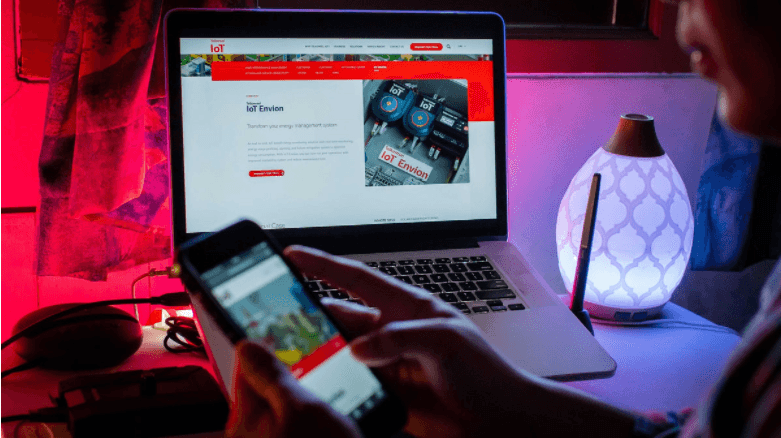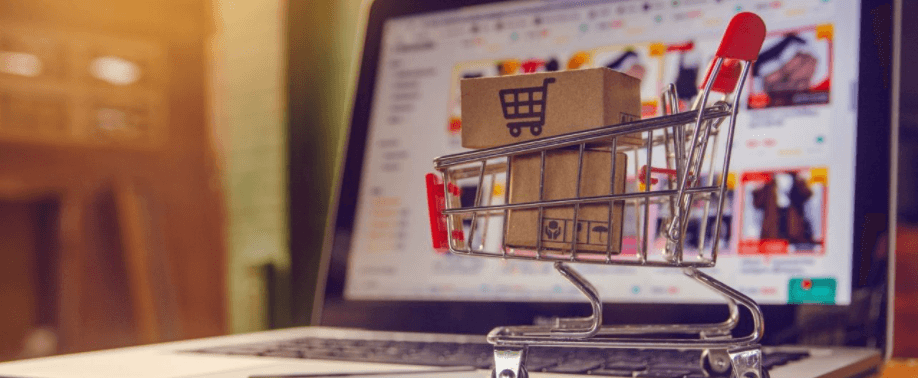
What is the Internet of Things
Technology is a new breakthrough that has been created by humans from several generations. So, every time there are many changes and the discovery of new things. At that time, wireless-based network access and resources also developed and many use wired networks today. Internet of things is one of the latest inventions that is currently being developed because it has the advantage of functionality and performance support without using the help of cables, and based on wireless.
internet of things
In this article, we will discuss everything about what the internet of things is, its constituent elements, how it works, to examples of its application. So, in the future you will better understand the concept and use of the internet in everyday life.
What is the internet of things?
Internet of things is a concept or program where an object has the ability to transmit or transmit data over a network without using the help of computers and humans. The internet of things or often referred to as IoT is currently experiencing many developments.
The development of IoT can be seen from the level of convergence of wireless technology, microelectromechanical (MEMS), internet, and QR (Quick Responses) Code. IoT is also often identified with RFID (Radio Frequency Identification) as a method of communication.
In addition, it also includes sensor-based technologies, such as wireless technology, QR Code which we often encounter. The ability of IoT itself is unquestionable. There are so many technologies that have implemented IoT systems, for example light sensors, sound sensors from the latest Google technology, namely Google Ai, and Amazon Alexa.
And most recently, the implementation of Smart City has been carried out in several developed countries, such as China and Germany. Thus, all forms of activity of residents of a city can be monitored properly by a system with a large-scale data network.
The Elements of IoT
After knowing what the internet of things is, then enter the discussion about the elements of IoT. At least, there are five elements that make up the internet including artificial intelligence, connectivity, sensors, and so on. Here is the description:
1. Artificial Intelligence
Artificial Intelligence (AI) or in Indonesian means artificial intelligence is an invention that can provide the ability for any technology or machine to think (to be "smart"). So, AI here is done by collecting various data, installing networks, and developing algorithms from artificial intelligence.
So, from the beginning a machine can only carry out commands from the user directly, now it can carry out various activities on its own without instructions from the user. For example, AI technology is applied to robotic waiters at a restaurant in Japan.
Where, the robot's ability to think like a real human servant. Because in the control system the robot has used the help of AI. By covering various sources of data and information completely and complex algorithms.
2. Connectivity
Connectivity or commonly referred to as the connection between networks. In an IoT system consisting of small devices, each system will be interconnected with a network. So as to create a more effective and efficient performance.
For standard network installation costs do not always require a large network and expensive costs. You can also design device systems using simpler networks at a lower cost.
3. Small size device
In today's technological developments, the smaller the device, the lower the cost, but the higher the effectiveness and scalability. So that in the future, humans can more easily use IoT-based technology devices comfortably, precisely, and efficiently.
4. Sensor
Sensors are an element that differentiates IoT from other sophisticated machines. With the sensor, it is possible to define an instrument, which can change IoT from a network that tends to be passive to an active system that is integrated with the real world.
5. Active engagement
Many modern machines still use passive engagement. However, what makes it different from other machines, IoT has implemented an active paradigm method in the various content, products and services available.
How does IoT works?
The way the internet of things works is to use an argument from a programming language algorithm that has been compiled. Where, every argument that is formed will result in an interaction that will help the hardware or machine in performing a function or work.
Thus, the machine does not require assistance from humans anymore and can be controlled automatically. The most important factor in the course of the program lies in the internet network which is the liaison between the system and hardware. The main task of humans is to be a supervisor to monitor every action and behavior of the machine while working.
The biggest obstacle to the development of the Internet of things is in terms of resources which are quite expensive, as well as the arrangement of a very complex network. Development costs are also still too expensive and not all cities or countries have used IoT as their primary need.
Example of internet of things application
There are so many examples of the application of IoT in everyday life that you are very close to without realizing it. The following are some examples of fields that have implemented IoT technology.
1. Health sector
The first example of the internet of things in the health sector. Currently, there are lots of advanced technologies that can help the performance of doctors and medical personnel. IoT also makes a new breakthrough in the development of medical machines and devices to support the performance of medical personnel to be more effective, precise, and reduce the risk of errors.
One example of the existence of IoT in the world of health is helping in the process of recording heart rate data, measuring body sugar levels, checking body temperature and so on. The data obtained will be stored in large-scale data storage.
Currently better known as big data. By using big data, you can read information and data in the form of numbers or text quickly and efficiently. Medical personnel no longer need to manually record, because all information can be stored in a database and will be sent to the IoT machine to perform tasks according to the developed algorithm.
2. Energy field
In the energy sector, there are various problems that arise. Starting from pollution or pollution, waste, and reduced supply of resources. Therefore, the existence of IoT itself is able to reduce some of these risks. For example, the application of a light sensor is able to reduce the use of electrical energy.
With this sensor, it is able to capture light particles, so that when there is a lot of light, the lights will turn off. However, when there is no light supply, the light will automatically turn on.
Then, it can also apply to the scheduling function that is carried out on the oven machine, the heating machine that has been integrated with the internet network. And a concrete example that we often encounter is on smart TVs that have implemented IoT for channel search methods tailored to the user's choice (user).
3. Transportation
Intelligent technology has also reached the field of public transportation. Usually, you always drive a car yourself according to the rules and driving skills you have learned. However, did you know that there is currently a new invention, where you can run a car without driving yourself.
The car can run itself according to procedures and programmed properly. So, you can feel the sensation like on the autopilot system on an airplane. The vehicle development stage is still being piloted in several developed countries.
In addition to vehicles, traffic systems are also included in the scope of the internet of things. With IoT, you are able to control various traffic systems when conditions are jammed or quiet. Thus, it can reduce the risk of accidents and traffic violations that occur.
4. General environment
The last example of the internet of things is in the field of the general environment. Where all human, plant, and animal activities can be monitored and monitored using IoT technology. For example, conducting research on water quality requires an accurate and reliable source of information.
With the help of the internet of things, you are able to search for valid and fast data sources. Not only that, the geographical area presented is also quite broad and can reach more areas. With the help of big data, problems regarding data transfer speed and data reading are well covered.
Indeed, the allocation of funds that must be prepared is also very large. However, the results obtained are also getting bigger. In addition, it can also be used as a measuring instrument for volcanic activity and earthquakes. Thus, it is able to provide more accurate predictions or estimates of the occurrence of a natural disaster.
The Benefits of internet of things
After knowing in detail about the example of the internet of things, the next step is to discuss the benefits of the internet of things. The benefits here can be divided into three parts.
1. Simplify the connectivity process
The first benefit of IoT is that it makes it easier to connect between devices or machines. The better the connection between the networks, the device system can run faster and more flexibly.
You may still use conventional tools, but if you are trying to operate a system centrally only through mobile devices, then the answer is definitely using smart technology.
2. Achievement of efficiency
The second benefit of the internet of things is the achievement of work efficiency. The more network connectivity that builds up, the less the amount of time it takes to perform a task will decrease. Thus, human activity and performance will be more assisted by the existence of IoT.
3. Increase the effectiveness of monitoring activities
By using the internet of things, the effectiveness of controlling and monitoring a job becomes easier. In addition, intelligent technology is also able to provide recommendations or work alternatives that are easier for users.
Conclusion
Internet of things is a concept where objects are able to transmit data using a network to perform work activities without the assistance of humans or interaction with computer devices.
The IoT elements consist of several parts, such as connectivity, Artificial Intelligence (AI), small system devices, sensors, and active engagement. The workings of IoT are created by making programming algorithm arguments, to generate program interactions with the internet network as a liaison between the two things. Examples of the application of IoT can be done in various fields such as health, transportation, environment, energy, and so on. The main benefits of the internet of things are the achievement of efficiency, effectiveness, and connectivity.



